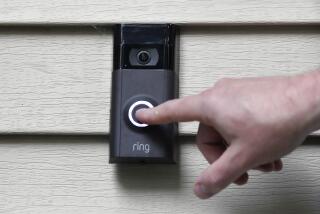Chromebook Pixel is a fine laptop, but is it worth the price? [Video]
Google’s first computer, the Chromebook Pixel, is technically impressive and excels at what it was designed for: browsing the Web and running Web-based software.
If you live on Facebook, work on Google Docs and watch Netflix, the Chromebook Pixel provides a fun and fast ride thanks to its powerful 1.8-GHz dual-core Intel Core i5 processor and 4 gigabytes of RAM.
QUIZ: How much do you know about Google?
But speedy computers aren’t hard to find in 2013, so what really makes the Chromebook Pixel stand out is its crisp and beautiful screen.
The nearly 13-inch display has a 2,560-by-1,700-pixel resolution with a density of 239 pixels per inch. That’s more pixels and a higher density than the ultra-high-resolution 13-inch Apple MacBook Pro with Retina laptop. The clarity of the display shows when you watch high-definition videos and look at high-resolution photos.
It’s so good I momentarily thought I was a professional photographer when I popped in an SD card full of pictures I had taken with my Canon camera and saw them in full-screen mode on the Chromebook Pixel. The photos simply looked stunning.
If that’s not enough to impress, Google also made the display a touch screen, which is very responsive and particularly useful on video sites like YouTube and Vimeo and when scrolling through long articles.
Unfortunately, Google’s software isn’t optimized for the touch screen, so unless you have very large icons, using the touch screen can be somewhat frustrating. I often found myself tapping something I didn’t mean to.
Another unique characteristic of the Chromebook Pixel is the display’s funky shape. The laptop’s 3:2 ratio that gives it the boxy, vintage TV look.
Google said it did this to emphasize what users do most on their computers, which is surf the Web. At first I had my doubts, but after trying it I came to like the Chromebook Pixel’s slightly taller display.
I was concerned about watching HD videos on the screen and thought there would be a lot of letterboxing -- black bars above and below the video -- but the display’s odd shape didn’t hurt the experience at all.
The Chromebook Pixel has a lot to offer in addition to the screen.
You have to applaud Google for the materials it chose to use on the machine. The Chromebook Pixel is very Apple-like in that Google went with an anodized aluminum alloy for the body and made an effort to hide all screws and vents. The Chromebook Pixel has a nice, cool metal feel and is sturdy and solid.
PHOTOS: Tech we want to see in 2013
There’s also no annoying branding that takes away from the design. There’s just a very sleek “Chrome” just below the display and another on the back of the laptop’s hinge. The closest you get to the flurry of rainbow colors Google is known for is when you open or close the laptop, which causes a thin light bar near the top of the lid to flash a subtle but iconic blue, red, yellow and green that quickly goes away. You can also enter a nifty cheat code to make the bar do a cool light sequence.
The quality design and top-notch materials are also evident when you open the laptop. The Chromebook Pixel has a visually appealing backlit keyboard and a very responsive and smooth bold black etched glass trackpad.
An often cited complaint about other Chromebook computers is that they appear to be made of cheap plastic, and that’s certainly not the case with the Chromebook Pixel.
Google has also given the Chromebook Pixel outstanding speakers, which aren’t visible because they are under the keyboard. Other Chromebooks are especially weak when it comes to audio, but the Chromebook Pixel’s speakers are loud and vibrant. They could certainly provide quality sound for a small group.
As far as storage, the Chromebook Pixel comes with a respectable 32 GB of space that can be used to save media content and other files. I say “respectable” because with Google you to do most things in the cloud, and if 32 GB isn’t enough room for you, the company also throws in 1 terabyte, or about 1,000 GB, of space through its Google Drive service.
That’s a lot more than most laptops come with, but of course, you’ll need an Internet connection to access those files. You get the 1 TB of storage for only three years. After that, you’ll have to pay $50 a month to keep it.
Storage can also be expanded using the Chromebook Pixel’s two USB 2.0 ports or its memory card slot, which can be used with MMC and SD cards. Additionally, the Chromebook Pixel has a mini display port that can be used to connect it to other screens.
Besides a headphone jack and a respectable webcam capable of shooting 720p HD video, you might also notice a SIM card tray on the outside of the Chromebook Pixel. It’s on the LTE version of the machine, which costs an extra $150. That version of the laptop can connect to Verizon Wireless’ network, which I thought was fast and reliable.
The LTE version of the Chromebook Pixel can use up to 100 megabytes of data per month for two years at no charge. If users want more data, they can get a $9.99 day pass or pay for monthly plans that start at $20 a month for 1 GB of Internet usage.
QUIZ: Test your Apple knowledge
There is a price to pay for all the speed and awesome display: less-than-stellar battery life. Using the laptop continuously with the brightness set to 75%, I got only three and a half hours of battery. When I reduced the brightness to 50%, I was able to get more than four hours. With other computers capable of pulling six hours, I thought that was weak and could be improved.
In the end, the price was a deal breaker for me and one major reason I cannot endorse buying the laptop. The Chromebook Pixel starts at $1,299 for the Wi-Fi version, which is available now. The LTE version can be pre-orded for $1,449 and is scheduled to ship in April.
At that price range, the Chromebook Pixel is competing with Apple’s MacBook Pro models, which are also elegantly designed, fast and have the advantage of being able to run programs besides those made for Google Chrome.
In fact, I might recommend the $999, 128 GB Microsoft Surface Pro before the Chromebook Pixel because even after you spend $130 on a keyboard cover, the Surface Pro is cheaper and still offers a quality screen, a powerful processor and can run all sorts of applications.
One Google executive has said a reason for the Chromebook Pixel is to inspire the next generation of Chrome OS computers, and it certainly should do that. The Chromebook Pixel is an excellent computer, but it isn’t enough to be worth the hefty price.
ALSO:
YouTube does the Harlem Shake with surprise ‘Easter egg’
Judge cuts Apple’s $1-billion Samsung judgment by almost half
Marissa Mayer solves Yahoo’s identity crisis: It’s a tech company







